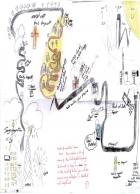Change and continuity
Consideration of change and continuity tends to be a feature of period and thematic studies. The latter, in particular, make it possible for students to examine trends and turning points over time, looking at those dimensions which remain stable while others alter, and examining the varying pace, direction and nature of those alterations. Another aspect of change and continuity – one that can also be explored within shorter depth studies – is the lived experience of change: how particular developments were experienced and understood by those who lived through them. These materials provide important insights into common student misconceptions and illustrate a range of strategies for planning and teaching (including the choice of worthwhile historical questions) that will support the development of more effective analytical descriptions of change and continuity. Read more
-

Teaching history's big pictures: including continuity as well as change
ArticleClick to view -

Year 9 use a 'road map' to problematise change and continuity
ArticleClick to view -

How did changing conceptions of place lead to conflict in the American West? Reflecting on revision methods for GCSE
ArticleClick to view -

Placing history: territory, story, identity - and historical consciousness
ArticleClick to view -

Past Foward: Continuity and progression
ArticleClick to view -

Have we got the question right? Engaging future citizens in local history enquiry
ArticleClick to view

